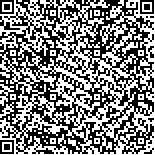| 摘要: |
| [摘要] 目的 分析2006~2015年广州市儿童神经系统疾病病种及病因构成情况,为制定病残儿家庭再生育的优生监测策略提供参考依据。方法 收集2006-01~2015-12广州市经医学鉴定的病残儿资料3 964例,对病残儿的基本情况、病史简介、疾病诊断等信息资料进行统计分析。结果 神经系统疾病或精神行为障碍病残儿数1 867例,占病残儿人数的39.05%~56.67%。前5顺位病种分别为:孤独症谱系障碍(31.01%)、智力低下或精神神经发育迟缓(29.67%)、脑瘫(13.12%)、癫痫(10.50%)、遗传性疾病(6.37%)。部分病例可能与围产期因素有一定关系,仍有相当多病例未发现确切的相关危险因素。结论 近年孤独症谱系障碍病残儿的人数比2010年前显著增多,这与孤独症谱系障碍认识和诊断能力的提高,遗传、各种生物性因素、社会文化及环境因素的改变等有一定相关性。将近一半病残儿鉴定病例为神经系统疾病,其中大部份未找到危险因素,做好孕前、孕期健康教育和保健等措施是临床和保健工作者的积极应对措施。 |
| 关键词: 病残儿 构成 神经系统疾病 |
| DOI:10.3969/j.issn.1674-3806.2020.01.13 |
| 分类号:R 179 |
| 基金项目:广州市医药卫生科技项目(编号:20161A011119) |
|
| Analysis of disease composition and causes of nervous system diseases in Guangzhou children |
|
LIANG Qiu-fen, YANG Ye, QU Yan-xia, et al.
|
|
Nursing Group of Department of Obstetrics and Gynecology, Guangzhou Women and Children′s Medical Center(Women and Infants Hospital), Guangdong 510180, China
|
| Abstract: |
| [Abstract] Objective To analyse the disease composition and causes of nervous system diseases in children with nervous system diseases in Guangzhou City from 2006 to 2015, and provide the eugenics monitoring strategies and reproductive services for families with disabled children. Methods Three thousand nine hundred and sixty-four cases of disabled children receiving medical expert testimony were collected from January 2006 to December 2015 in Guangzhou City, and their basic information, medical history and diagnosis were statistically analysed. Results The number of disabled children with nervous system diseases or mental behavior disorders was 1 867, accounting for 39.05%~56.67% of the disabled children. The top five diseases were autism spectrum disorders(31.01%), mental retardation or delayed psycho neurogenesis(29.67%), cerebral palsy(13.12%), epilepsy(10.50%) and hereditary diseases(6.37%). Some cases might be related to perinatal factors, but there were still a lot of cases without definite risk factors. Conclusion In recent years, the number of disabled children with autism spectrum disorders has increased significantly compared with that before 2010, which is related to the improvement of recognition and diagnosis ability of autism spectrum disorders, the change of genetics, various biological factors, social culture and environmental factors. Nearly half of the disabled are identified as nervous system diseases most of which have no risk factors identified. Health education and health care before and during pregnancy are the positive measures for clinical and health workers. |
| Key words: Disabled children Composition Nervous system diseases |

